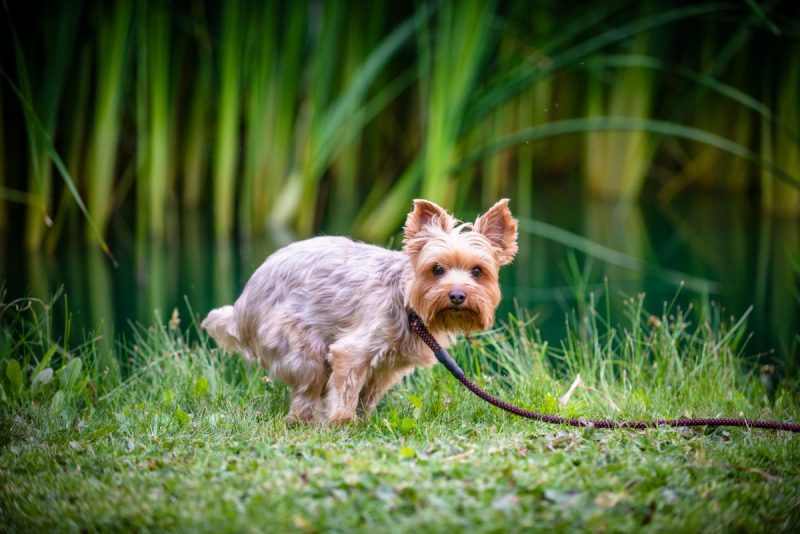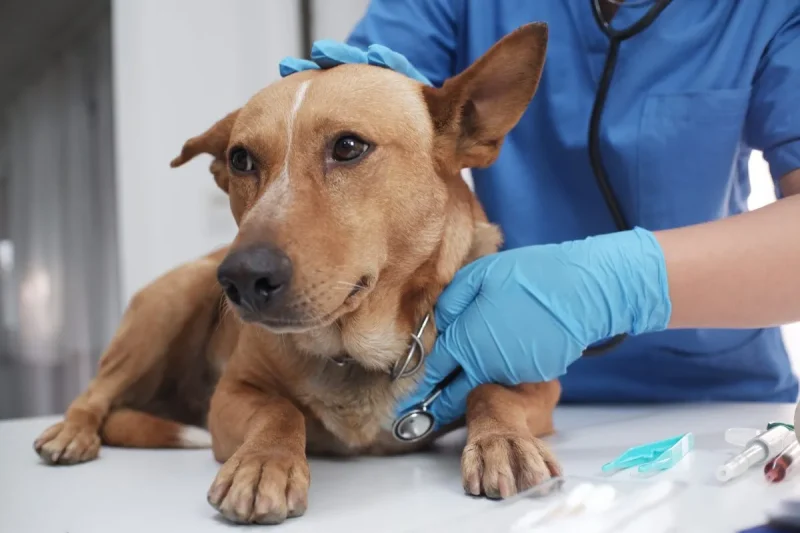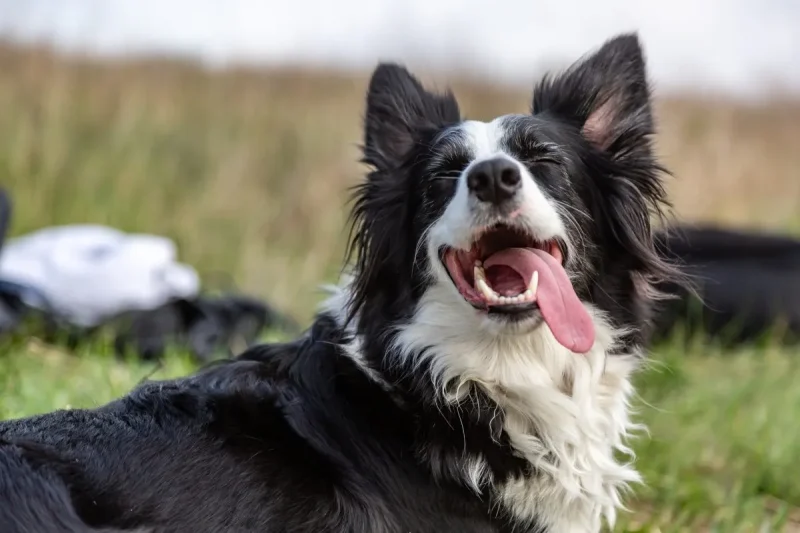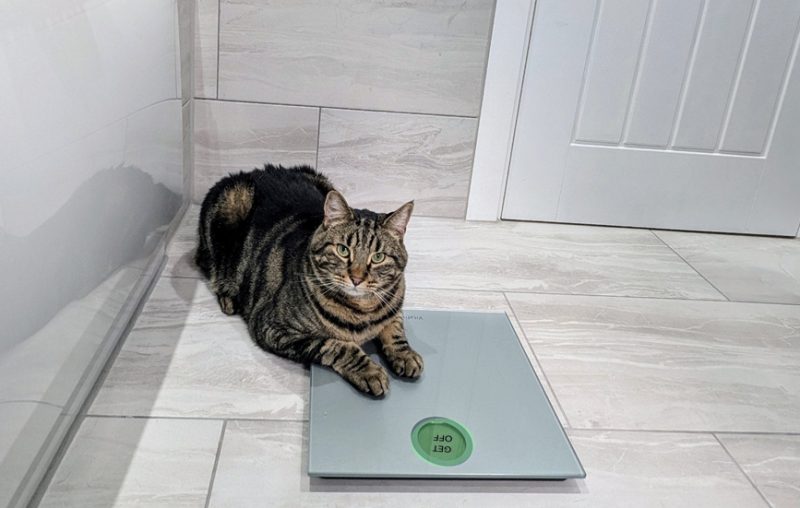Why Your Dog Is Dragging Their Butt and Scooting
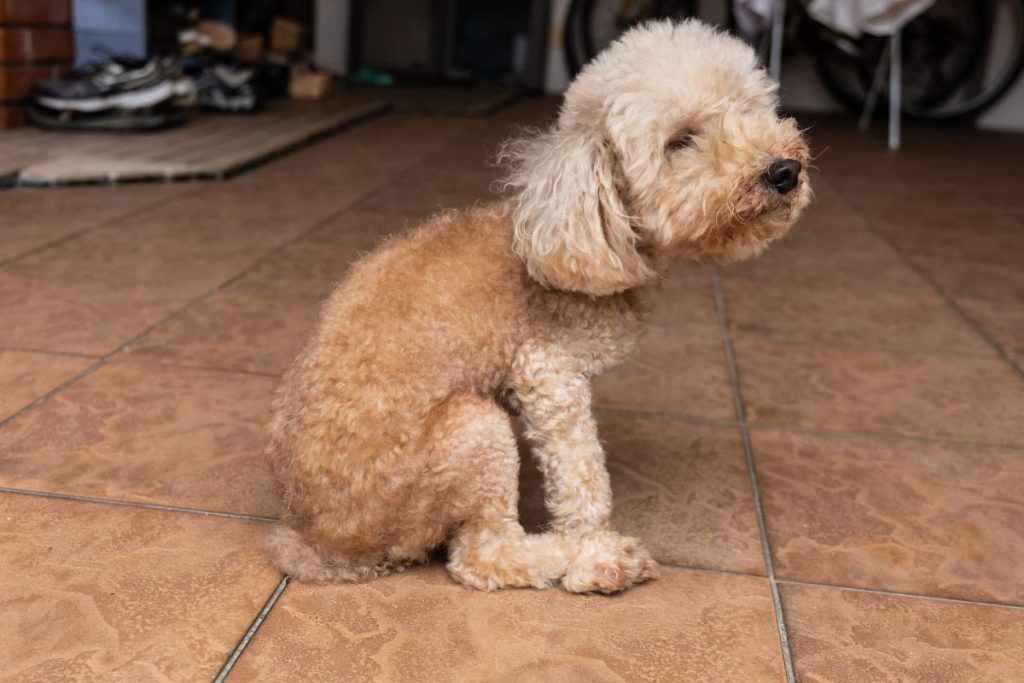
If you’re a dog parent, chances are you’ve caught your furry friend dragging their butt across the floor at some point. This peculiar behavior — called scooting — is fairly common among dogs, but it’s important to know why it’s happening. While it may seem amusing or harmless at first, scooting is actually a sign that something might be bothering your pup. Below, we’ll explore the common causes behind this behavior and what steps you can take to help your dog find relief.
Table of contents
- What is scooting?
- Why is your dog dragging their butt across the floor?
- Anal gland problems
- Parasites
- Allergies
- Skin infections
- Behavioral issues
- Diet
- Other medical conditions
- What to do if your dog is dragging their butt
- Is there a home remedy for dog scooting?
- When to see a vet
What is scooting?
Scooting refers to the action of a dog dragging their rear end along the floor or ground, using their front legs to propel themselves forward. This behavior is often accompanied by a look of discomfort or distress and can occur on various surfaces like carpet, grass, or tile. When dogs scoot, they might be trying to relieve itchiness, pain, or irritation in the anal region.
Why is your dog dragging their butt across the floor?

There are several reasons why your dog may be dragging their butt. More often than not, scooting is a symptom of an underlying health issue that needs attention. Some of the most common causes are:
Anal gland problems
One of the most common reasons dogs drag their butts is due to issues with their anal glands. Dogs have two small sacs located on either side of the anus that secrete a fluid used for marking territory and identifying one another. These glands usually empty when a canine defecates, but sometimes they become impacted or infected. When this happens, your dog may scoot across the floor in an attempt to relieve the pressure.
Parasites
Parasites — particularly tapeworms — can irritate your dog’s rear end and cause them to drag their butt. These worms are often contracted through fleas or by ingesting infected animals. If you notice small, rice-like segments around your dog’s anus or in their feces, it’s a sign of tapeworms. Other parasites like roundworms can also cause irritation and itching.
Allergies
Just like humans, dogs can suffer from allergies that result in skin irritation and itching. Environmental factors such as pollen, dust, or certain types of grass can make your pup’s skin itchy and uncomfortable. Food allergies can also contribute to these reactions. When allergies affect the area around your dog’s anus, it can lead to scooting as they try to scratch the itch.
Skin infections
Bacterial or fungal infections can cause inflammation and discomfort in your dog’s anal region. These infections might develop from an untreated injury, a previous bout of diarrhea, or even poor grooming habits. If your pet has an infection, they may display additional signs like redness, swelling, or a foul odor around the anus.
Behavioral issues
In some cases, butt dragging can be a behavioral issue rather than a physical one. Dogs might develop this habit due to boredom, anxiety, or even as a learned behavior. If your pooch received attention or treats after scooting in the past, they might repeat the action as a way to seek attention or rewards. That said, however, be sure to look into any potential medical causes before assuming it’s purely behavioral.
Diet
Sometimes, the problem might be as simple as dietary issues leading to improper digestion. If your dog’s diet is low in fiber, it can result in soft stools or diarrhea, making it more difficult for the anal glands to empty naturally during defecation. On the other hand, if a dog is fed too many fatty foods, it can cause obesity, which may affect their ability to express their anal glands naturally.
Other medical conditions
Less commonly, scooting can be a sign of other medical conditions such as tumors, perianal fistula, rectal prolapse, or neurological issues. If the behavior is persistent and doesn’t respond to basic treatment, a more thorough veterinary examination might be necessary.
What to do if your dog is dragging their butt
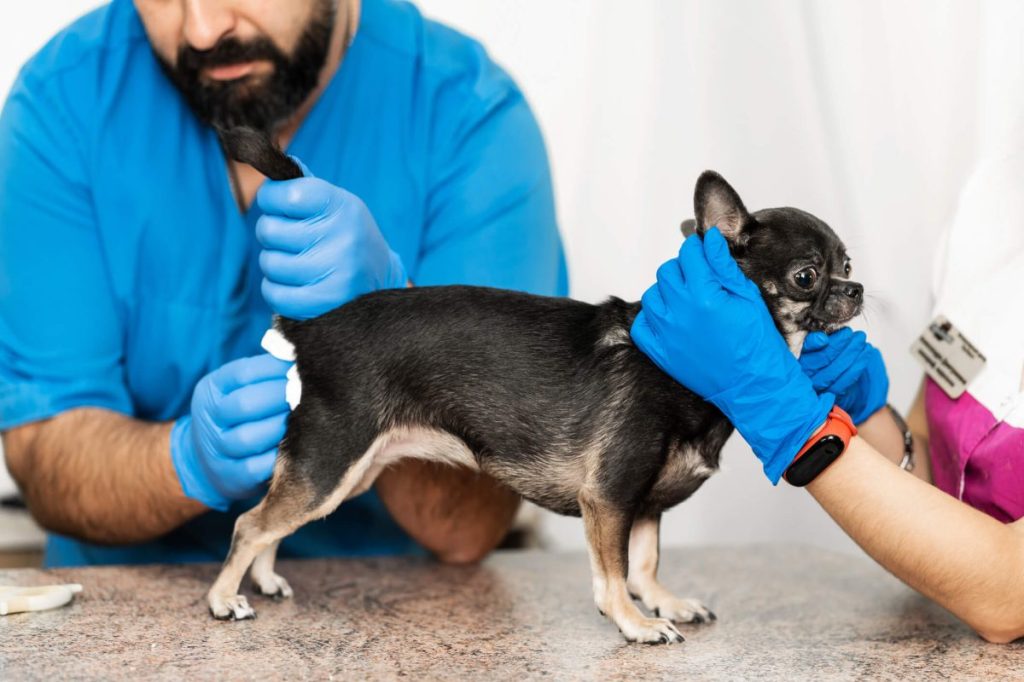
Before seeking treatment, it’s essential to first determine the underlying cause of your dog’s scooting. Once you’ve identified the root issue, you can explore the following treatment options to effectively resolve the problem:
- Anal gland expression: If your dog’s anal glands are full, they may need to be manually expressed. While this can be done at home with proper guidance, it’s usually safer to leave it to a veterinarian or professional groomer to avoid the risk of injury or infection. Some dogs require this procedure regularly, while others may only need it occasionally.
- Parasite control: If parasites are the culprit, a simple deworming treatment can clear up the issue. Your vet will recommend the best medication based on the type of worms present.
- Allergy management: Identifying and managing allergies can be more challenging. Your vet might suggest dietary changes or allergy testing to determine the trigger. Based on the results, antihistamines or other medications can be used to alleviate symptoms.
- Topical treatments: For skin irritations, topical treatments or medicated baths can help soothe the affected area. Always consult your vet for the appropriate product.
- Proper grooming: Keep your dog clean and well-groomed to reduce the risk of infections or matting. If your dog has long hair, ensure the fur around the anal area is trimmed properly to prevent fecal matter from getting stuck, which can lead to scooting.
- Dietary changes: A high-fiber diet can aid in producing firmer stools, which may help naturally express the anal glands. Consult your veterinarian for advice on the best dietary adjustments for your dog.
- Behavioral enrichment: If scooting is determined to be behavioral, providing your dog with more mental and physical stimulation could address the issue. Regular walks, interactive toys, and training exercises can keep your dog stimulated and content.
Is there a home remedy for dog scooting?

While it’s always advisable to consult a veterinarian for the most appropriate treatment, there are a few home remedies you can try to provide your pet with comfort.
- Incorporate fiber supplements: You can increase your dog’s fiber intake by adding pumpkin or cooked sweet potatoes to their meals. Both are rich in fiber and are safe for dogs. Just make sure to use pure, canned pumpkin and not pumpkin pie filling.
- Apply warm compress: If your dog seems particularly uncomfortable, applying a warm compress to the anal area can provide some relief. Use a clean cloth soaked in warm water and gently hold it against the area for about 15 minutes.
- Consider omega-3 fatty acids: Adding omega-3 fatty acids to your dog’s diet can improve their overall skin health, which might reduce scooting caused by itchy skin. Fish oil supplements are a popular choice, but consult with your veterinarian before you start administering them to your pet.
- Use coconut oil: Coconut oil is known for its soothing and moisturizing properties. You can apply a small amount to the affected area, or consider adding a teaspoon to your dog’s food. Ensure your pup is not allergic to coconut oil before using it regularly.
- Give an oatmeal bath: If your dog doesn’t mind baths, an oatmeal soak can be soothing. Grind some plain oatmeal into a fine powder and mix it into a warm bath. Let your dog soak for about 10-15 minutes, then rinse thoroughly.
- Ensure adequate hydration: Make sure your dog always has access to fresh, clean water. You might also consider adding a bit of water or low-sodium broth to their dry food to increase moisture intake.
When to see a vet
While occasional scooting in dogs might not be a cause for alarm, frequent or persistent butt dragging should not be ignored. If you notice any of the following, contact your vet right away:
- Severe or excessive scooting
- Signs of pain or discomfort
- Blood or pus in the anal area
- Sudden changes in appetite or behavior
- Protrusion of the rectum
If you’re wondering whether scooting will go away on its own, it largely depends on the cause. In cases of temporary irritation or mild diarrhea, the behavior might resolve without any intervention. However, if the underlying issue is related to anal gland problems, parasites, or allergies, it’s unlikely to improve without proper treatment. Ignoring persistent scooting can lead to further complications and prolonged discomfort for your dog. With that in mind, it’s always best to have a vet evaluate the situation and recommend the most appropriate treatment plan.
